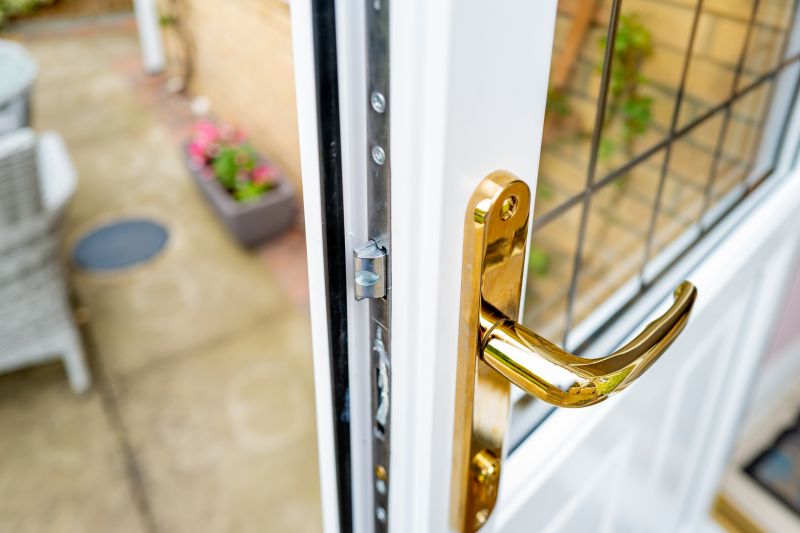Top Products For Rear Entry Door Replacements To Enhance Security
Explore the leading options designed to improve your home's safety and curb appeal with reliable rear entry door solutions.
 Replacing a rear entry door can significantly enhance the functionality and aesthetic appeal of a home. Whether the goal is to improve security, increase energy efficiency, or update the style, selecting the right product is essential. The market offers a wide array of options, including traditional wood doors, durable steel models, and low-maintenance fiberglass varieties. Each material type provides different benefits and considerations, making it important to evaluate individual needs and preferences.
Replacing a rear entry door can significantly enhance the functionality and aesthetic appeal of a home. Whether the goal is to improve security, increase energy efficiency, or update the style, selecting the right product is essential. The market offers a wide array of options, including traditional wood doors, durable steel models, and low-maintenance fiberglass varieties. Each material type provides different benefits and considerations, making it important to evaluate individual needs and preferences.
Top Overall Option
Durable Steel Rear Entry Door
A steel rear entry door offers a combination of strength, security, and low maintenance. Its robust construction can withstand harsh weather conditions and provide reliable protection. Many models come with insulated cores to improve energy efficiency and are available with various finish options to match different home styles. Easy to install and maintain, a steel door is often considered a practical choice for homeowners seeking durability and security in their rear entryway.
Types of Products For Rear Entry Door Replacements
Wooden Exterior Doors
Classic and versatile, wooden doors offer natural beauty and can be customized with paint or stain. They require periodic maintenance to preserve appearance and prevent damage from the elements.
Steel Doors
Known for strength and security, steel doors are resistant to impacts and intrusions. They often feature insulation options for improved energy efficiency.
Fiberglass Doors
Low-maintenance and highly durable, fiberglass doors mimic the look of wood while resisting dents, warping, and moisture.
Glass Panel Doors
Designed to add natural light, these doors incorporate decorative or clear glass panels, enhancing curb appeal while maintaining privacy with frosted or tinted options.
Sliding Doors
Ideal for limited space, sliding doors provide easy access and modern aesthetics, often featuring large glass panes.
French Doors
Double-door designs with multiple glass panels, offering a stylish and functional option for rear entries.
Storm Doors
Installed in front of the main door, storm doors provide added insulation and protection from weather while allowing ventilation.
Security Doors
Enhanced with reinforced frames, multi-point locks, and tamper-proof hardware, these doors prioritize safety.
Composite Doors
Combining materials like wood and PVC, composite doors offer durability, insulation, and aesthetic flexibility.
Pocket Doors
Designed to slide into the wall cavity, pocket doors save space and provide a sleek look for rear entry areas.
Barn-Style Doors
Rustic and trendy, barn-style doors add character and are suitable for certain home styles and outdoor access points.
Vented Doors
Featuring built-in vents or screens, these doors facilitate airflow while maintaining security.
Popular Choices
Popular for energy efficiency and security, these doors are available in various finishes and styles.
Offering a balance of durability and natural light, these doors are favored for their low maintenance.
Ideal for patios and backyard access, these doors provide wide openings and modern aesthetics.
Chosen for their elegance and functionality, these doors enhance outdoor connection and visual appeal.
Increasingly popular for added safety, these doors feature reinforced hardware and locking systems.
Designed for accessibility, these doors facilitate easy entry for all users.
Valued for their resilience against the elements and minimal upkeep.
Popular for allowing airflow while maintaining security, suitable for specific climate needs.
Offering a grand entrance and versatile design options for rear entries.
Appealing for a country or farmhouse aesthetic, often used in outdoor or garden access points.
Designed to reduce heat transfer, these doors are favored in colder climates.
When choosing a rear entry door, factors such as insulation properties, security features, weather resistance, and ease of installation come into play. For example, insulated doors can help maintain interior temperatures, reducing energy costs over time. Security enhancements like reinforced frames and multi-point locking systems can provide added peace of mind. Additionally, aesthetic elements such as glass panels, decorative hardware, and finish options allow homeowners to customize their exterior appearance.
Installation methods vary, with some doors designed for straightforward DIY projects and others requiring professional assistance. Proper measurement and compatibility checks are crucial to ensure a seamless fit and optimal performance. Maintenance considerations, including cleaning and periodic inspections, also influence long-term satisfaction with the replacement door. Overall, selecting the right product involves balancing style, functionality, durability, and budget to achieve the desired outcome.
Investing in a quality rear entry door can contribute to the overall safety and curb appeal of a residence. By understanding the available types and features, homeowners can make informed decisions that align with their specific requirements. Whether upgrading an existing entryway or installing a new door in a renovation project, choosing the appropriate product is a key step toward enhancing home value and comfort.
Key Buying Considerations
- Material durability and resistance to weather conditions
- Insulation properties to improve energy efficiency
- Security features such as reinforced frames and multi-point locks
- Compatibility with existing door opening dimensions
- Ease of installation, whether DIY or professional installation required
- Aesthetic style and how it complements your home's exterior
- Maintenance requirements for long-term upkeep
- Cost range and budget considerations
- Type of glass, if applicable, including privacy and safety features
- Hardware options like handles, locks, and hinges
- Threshold design for accessibility and weatherproofing
- Compatibility with existing framing or need for modifications
- Availability of customization options such as finishes and decorative glass
- Warranty and support from the manufacturer or supplier
- Energy efficiency ratings and certifications
